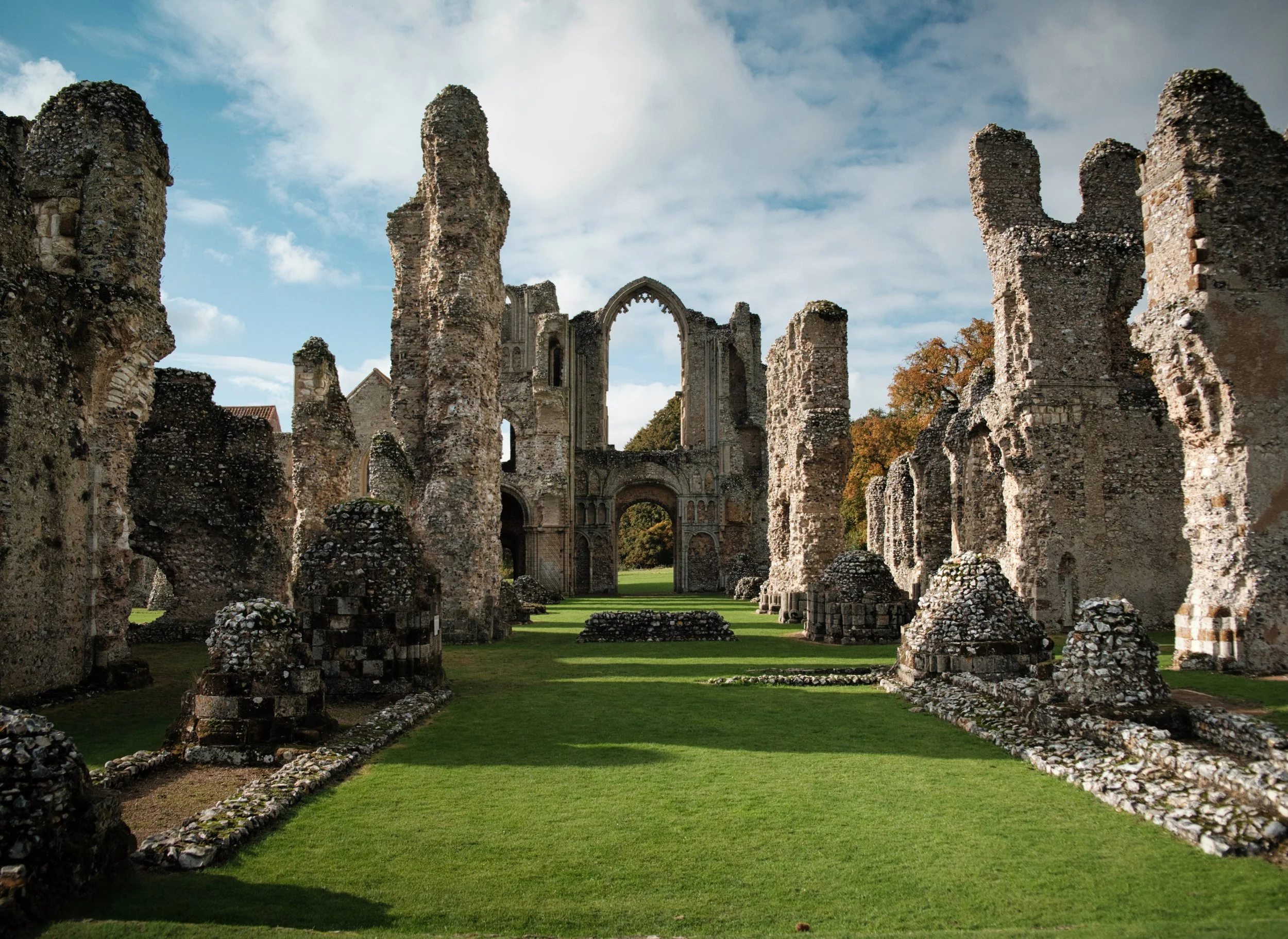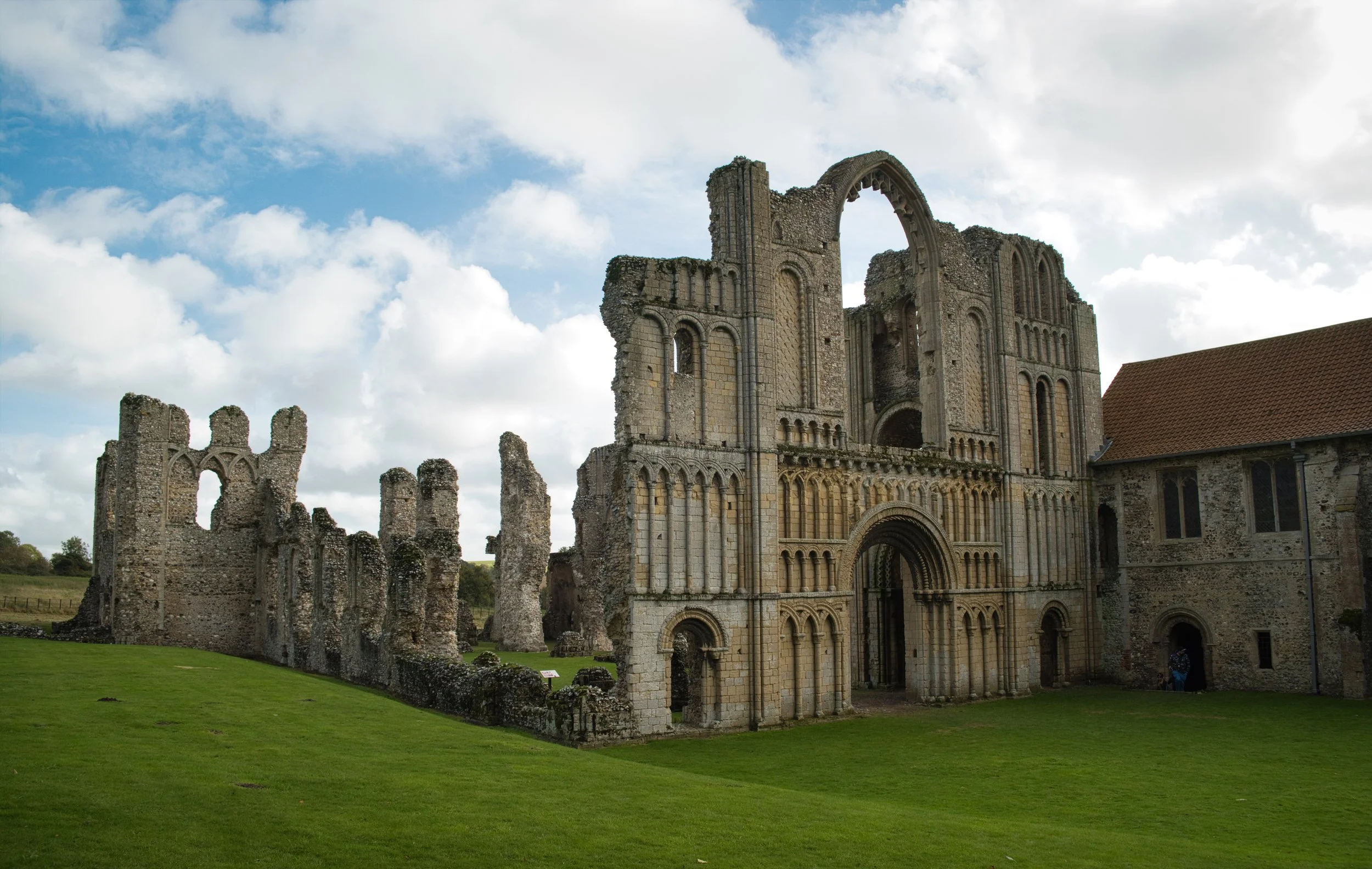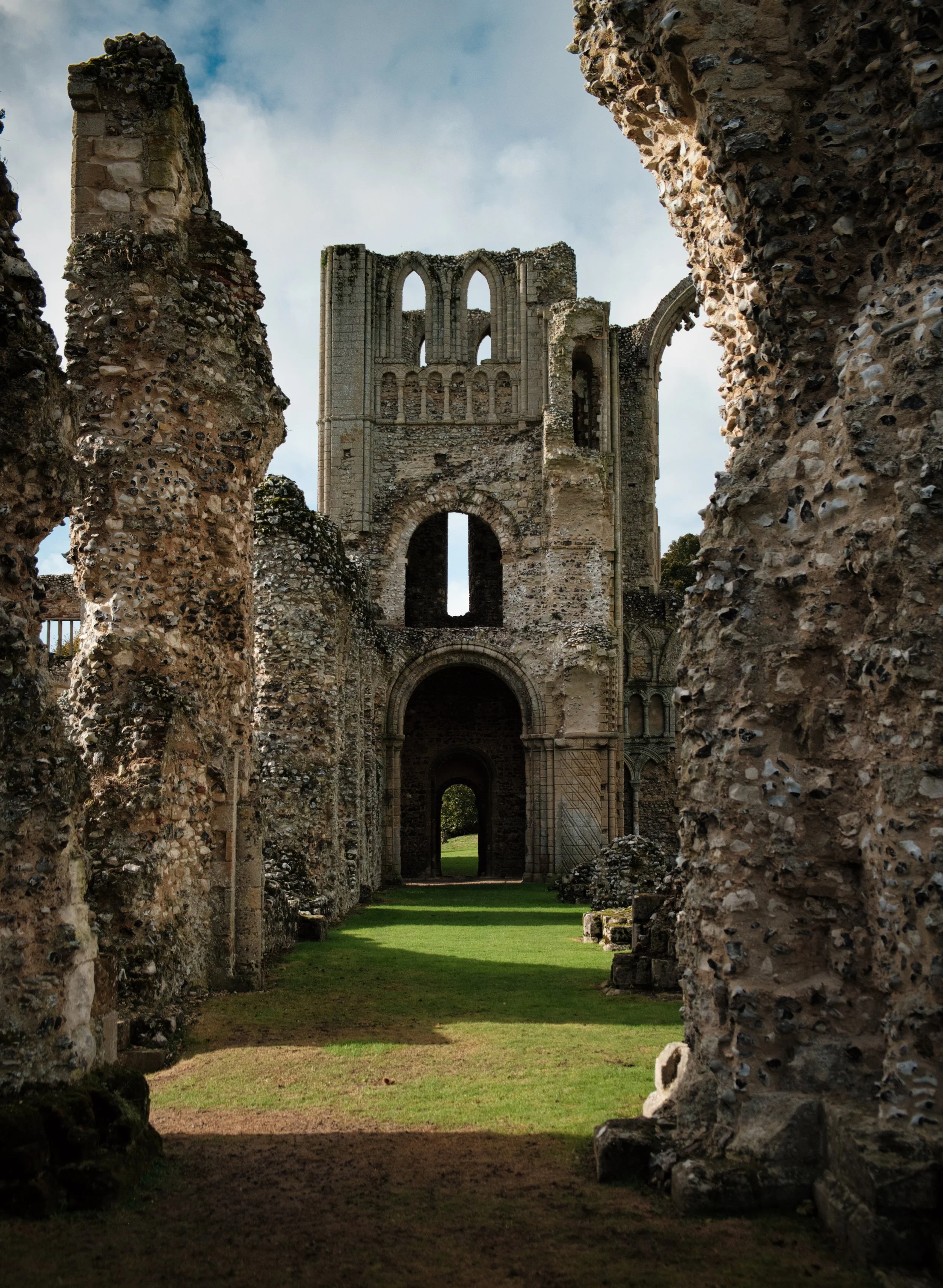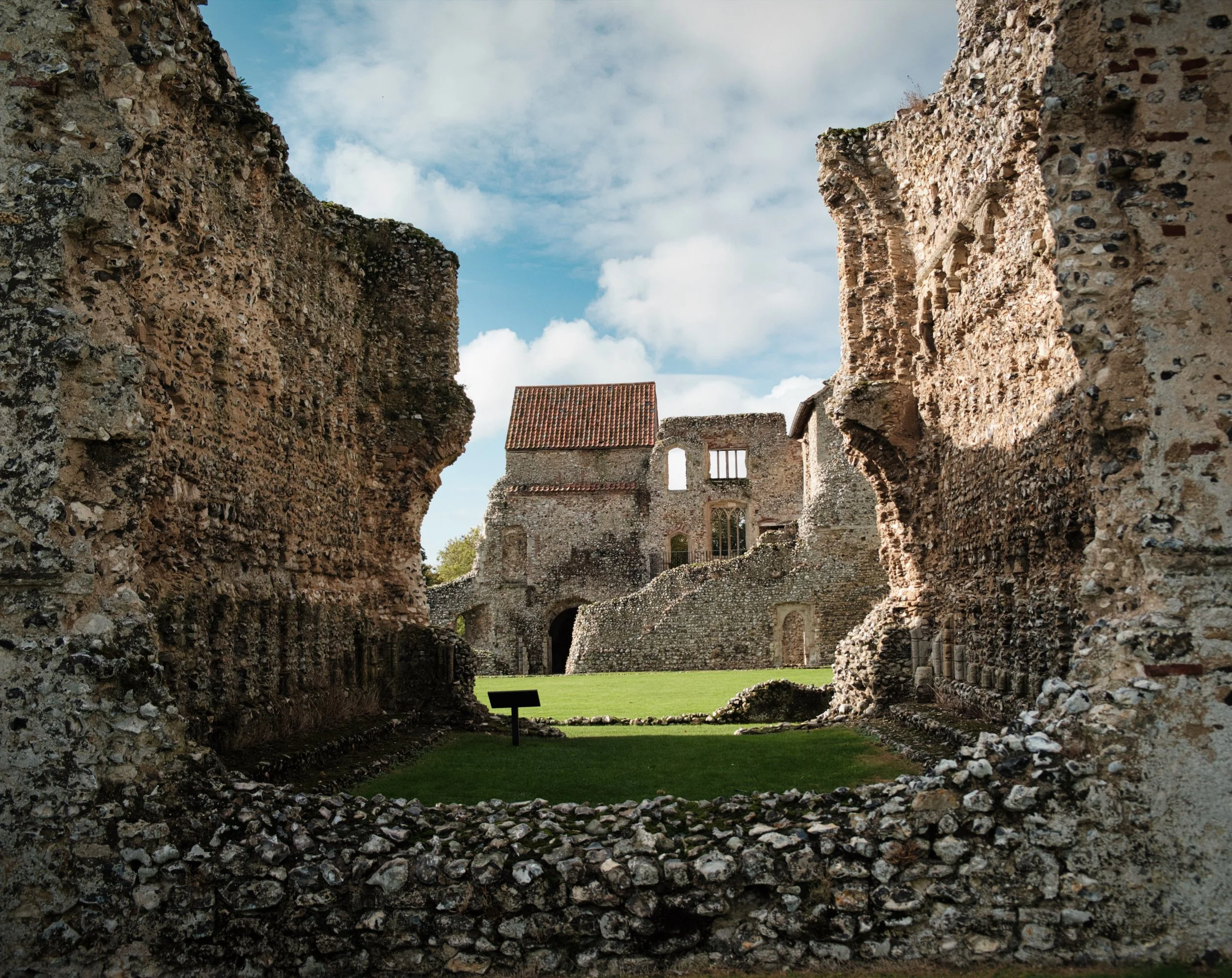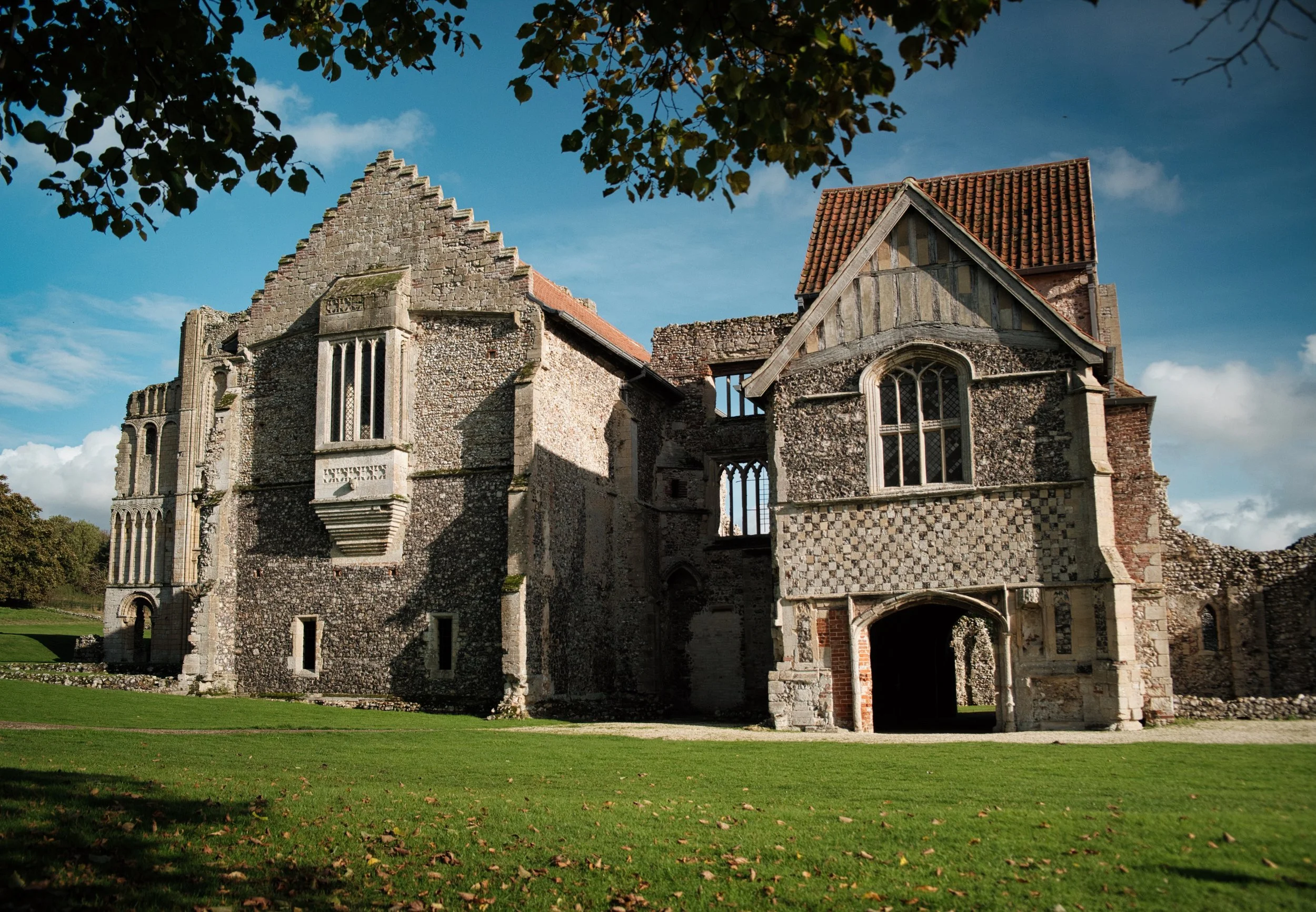Castle Acre Priory
Castle Acre Priory is a jewel of medieval architecture in Norfolk. It tells the story of power and piety of the Norman elite following the conquest of England in 1066.
The story of the priory begins in the early 1070s with William de Warenne, who was a Norman knight who fought alongside William I at the Battle of Hastings.
His reward for his loyalty was lands in Lewes in Sussex and Consibrough in Yorkshire.
Looking down the nave at Castle Acre Priory
William had already founded the first Cluniac monastery in Lewes, the main seat of his family. Having already built a castle at Acre in Norfolk, between 1081 and 1085 he brought a small number of monks from Lewes there and began work on a priory within the walls of his castle.
William died in 1088, and the following year his son William II de Warenne, 2nd Earl of Surrey, granted the monks a new site within what was the castle grounds as the original site proved to be too small and inconvenient for the monks.
The spectacular West front of the Priory church
The construction of the priory was slow. It was 57 years before the church was consecrated, and a further 20 years before the west end was completed.
Over the next two centuries, the priory continued to receive endowments from the de Warennes. The last of which was made by the sixth earl in 1315.
Looking towards the tower at the west end of the church
Like many priories in England that were founded by the Cluniac and other French orders, Castle Acre suffered from restrictions and punitive taxation during the wars with France in the late 13th and 14th centuries.
The end came, as with approximately 800 other monasteries built in England over the previous almost thousand years, from Henry VIII’s Suppression of the Monasteries in the late 1530s.
Looking through the remains of the Chapter House
Much of the church was immediately demolished. The site and surrounding lands were leased to John Howard in 1558. Around this time the monastic buildings were also being dismantled. Only the prior’s lodging was saved - it remained in use as a house well into the 17th century.
The site is maintained by English Heritage. If you visit, make sure you also visit Castle Acre Castle, less than a mile away in the village which took its name.
The Priors Lodgings

